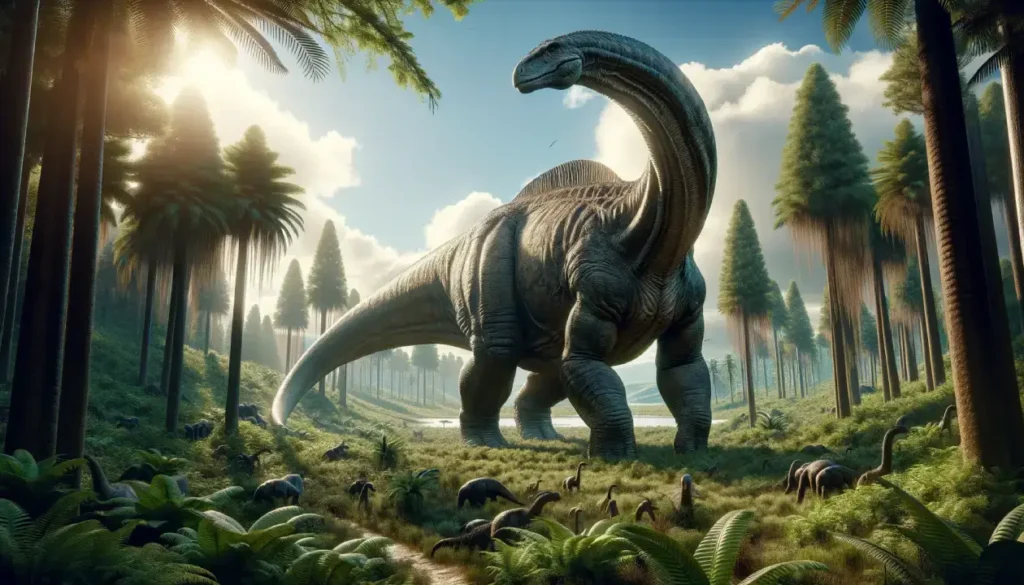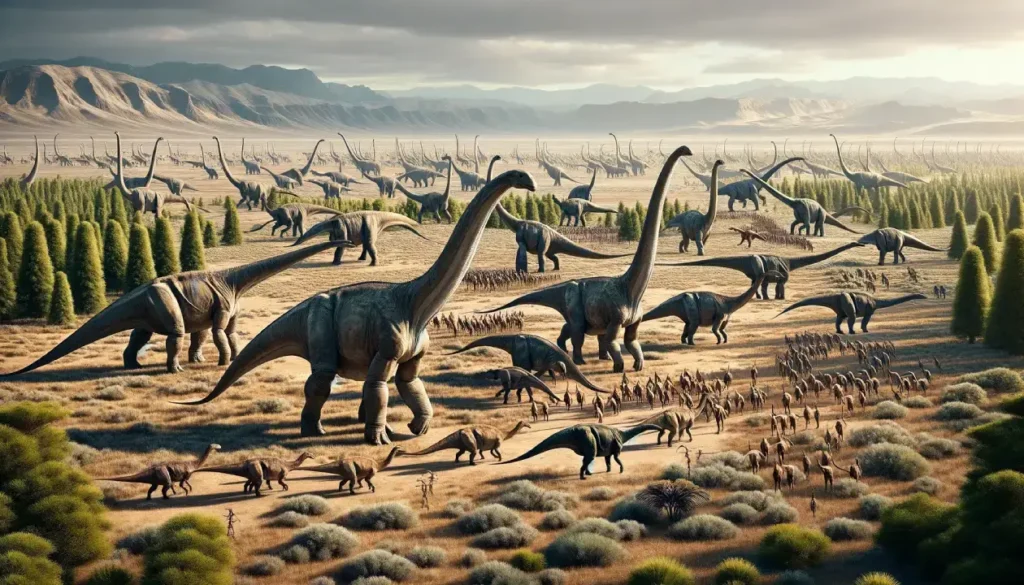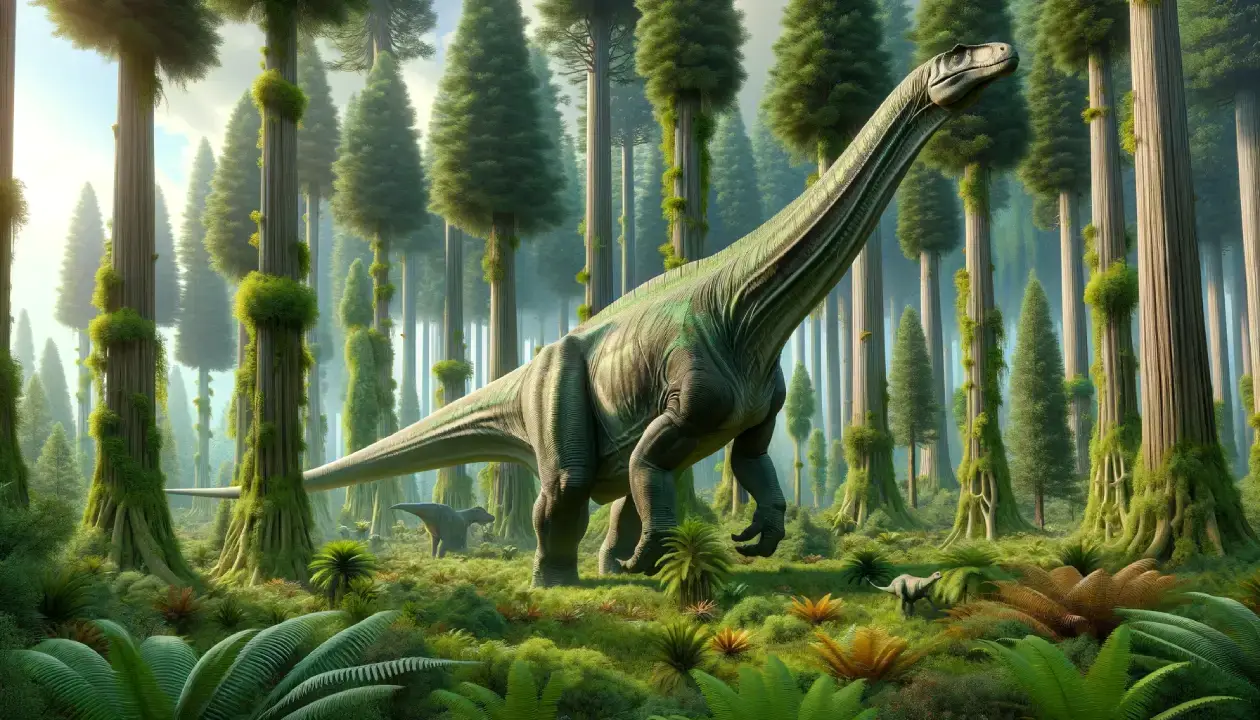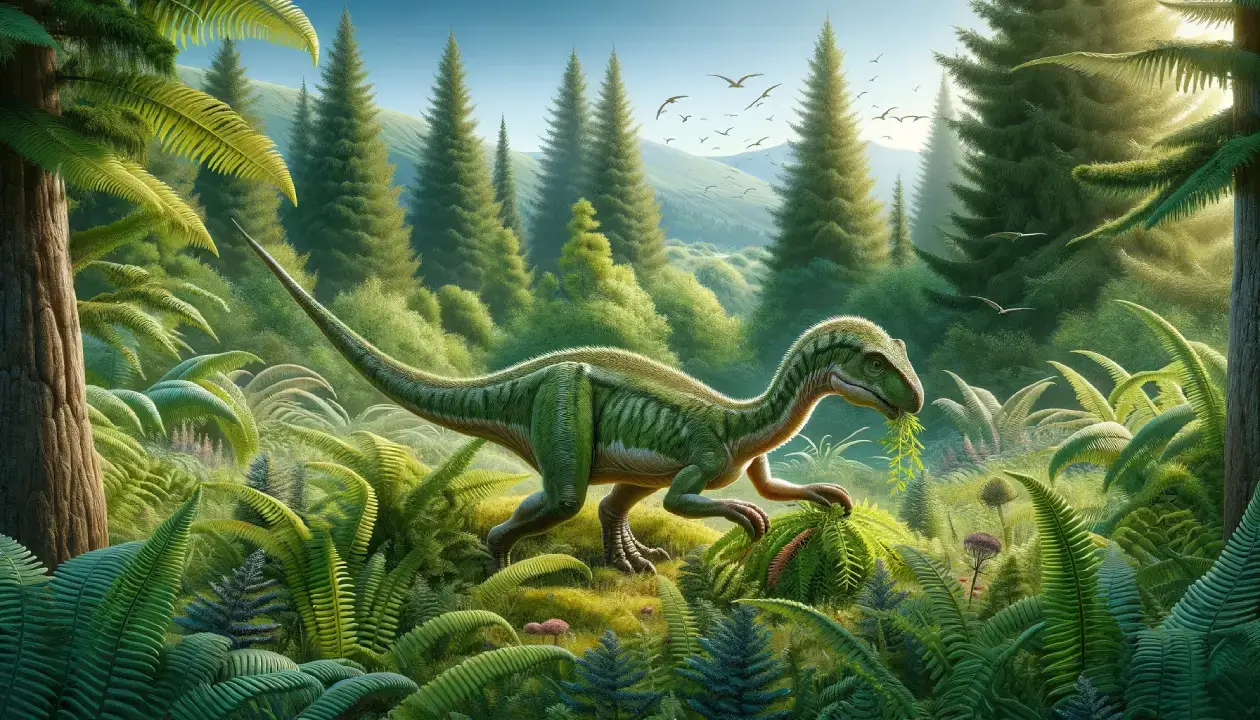Dreadnoughtus was a gigantic sauropod dinosaur that lived in Argentina during the Late Cretaceous period, about 76 to 70 million years ago. It was one of the largest land animals that ever lived, with an estimated mass of 59 metric tons. It was one of the first dinosaurs scientifically investigated from South America, and had a relatively complete skull. It had a long and muscular tail, which gave it its name meaning “fears nothing”.
Basic Information
| Feature | Details |
| Time Period | Late Cretaceous (77 million years ago) |
| Diet | Herbivore |
| Length | 26 meters (85 feet) |
| Weight | 59 tons (130,000 pounds) |
| Size | Gigantic |
| Posture | Quadrupedal |
| Locations | Argentina |
| Continent | South America |
| Type | Sauropod |
| Habitats | Forests and plains |

Description of Dreadnoughtus
Historical Context
Dreadnoughtus, meaning “fears nothing”, is a genus of dinosaur that belonged to the group of sauropods, the largest land animals that ever lived. It was named by Kenneth Lacovara in 2014, based on a nearly complete skeleton found in the Cerro Fortaleza Formation in Patagonia, Argentina. The name was inspired by the dreadnought battleships, which were huge and heavily armed. The species name, hogwartsia, was a tribute to the Harry Potter series, which featured dragons and magic. Only one species of Dreadnoughtus has been recognized, D. hogwartsia.
Physical Attributes
Dreadnoughtus was a gigantic dinosaur, measuring up to 26 meters in length and weighing up to 59 tons. It had a robust body with four sturdy legs and a long tail. Its head was small and narrow, with a beak-like mouth and long, serrated teeth. Its most distinctive feature was its massive size, which made it one of the heaviest land animals ever known. It had a long neck, which had 10 vertebrae and made up about a fifth of its total length. The neck was flexible and could bend from side to side, allowing Dreadnoughtus to reach different heights of vegetation. The tail was also long and whip-like, and may have been used for defense or communication.
Feeding Habits
Dreadnoughtus was a herbivore that fed on low-growing plants and shrubs. It used its beak to snip off branches and leaves and its teeth to strip and grind them. It had a large gut that could digest tough plant material. It may have also swallowed stones to help with digestion, as some gastroliths (stomach stones) have been found associated with its fossils. Dreadnoughtus may have lived in herds or groups for protection and social interaction.
Unique Features
One of the unique features of Dreadnoughtus was its enormous mass, which gave it an advantage over predators. Its name means “fears nothing”, and this dinosaur would have had nothing to fear from any other animal in its environment. Another unique feature of Dreadnoughtus was its completeness, as it is known from more than 70 percent of its skeleton, making it one of the most complete giant sauropods ever discovered. This allows scientists to study its anatomy and physiology in detail.

Movement and Speed
Dreadnoughtus was a fast runner for its size, capable of reaching speeds of up to 24 kilometers per hour (15 miles per hour). It had long and powerful hind legs that propelled it forward. Its forelimbs were slightly shorter and had four fingers each. It could use them to grasp food or support itself when resting. Dreadnoughtus also had good balance and coordination, thanks to its long tail that acted as a counterweight.
Cultural Impact
Dreadnoughtus has been featured in several books, movies, games and toys as one of the most impressive sauropods. It has appeared in popular media such as Jurassic World Evolution, Walking with Dinosaurs, Primeval, and Jurassic Park: Operation Genesis. It has also been displayed in many museums around the world, such as the Academy of Natural Sciences of Drexel University in Philadelphia, where the original fossil skeleton is exhibited.
Interesting Facts
- Dreadnoughtus is related to other giant sauropods such as Argentinosaurus, Patagotitan, Puertasaurus, and Futalognkosaurus. They are collectively known as titanosaurs.
- Dreadnoughtus may have had sexual dimorphism or individual variation in its size and shape, as some specimens show different features of these structures.
- Dreadnoughtus lived alongside other dinosaurs such as Gasosaurus, Xiaosaurus, Huayangosaurus, and Allosaurus. They all inhabited the Cerro Fortaleza Formation, a rich fossil site in Argentina.
Related Dinosaurs
- Troodon : A small, feathered carnivore known for its speed and agility.
- Triceratops : A herbivore with three horns and a large frill, often considered the nemesis of the T-Rex.
- Brontosaurus : A massive, long-necked herbivore that towered over most other dinosaurs.






